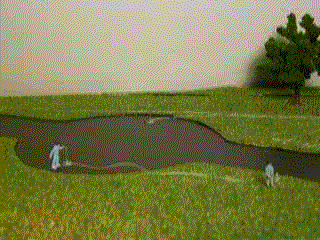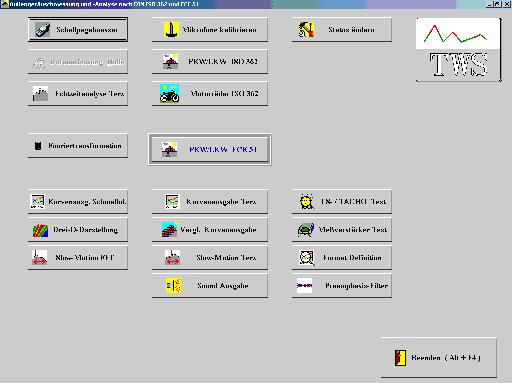TWS Michael Schulthes

Technisch-Wissenschaftliche Software
|
System for Measurement and Analysis of Pass-by-Noise according to the old ISO 362 and the new ECE 51 Methods A and B With
this Measurement System the Pass-by-Noise of vehicles is analysed
using international standards. This is done with the vehicle under
test passing
two Measurement Microphones located against the driving
direction 7.5 m from the middle of the test lane. The driver
enters the lane with a specified speed and presses downright the
throttle at a fixed position. The
Measurement-System simultaneously records position, speed, engine speed
and throttle-position of the vehicle plus the sound signals of both
microphones
while the vehicle passes the measurement track. The driving direction
is recognised automatically and the microphone
channels are allocated correctly to the vehicle sides. Runs with
wrong speed, wrong kickdown position, high ambient noise etc.may
be discarded automatically. When using ECE 51 method B depending on the vehicle's weight and engine power a reference acceleration is calculated, that determines the gears used for the measurements. A sophisticated treatment of the speed data ensures precise determination of the acceleration that is essential for the new standard.
The system can be operated completely in the vehicle under test. The connection is established using a short-distance-WLAN. This makes it easy for a single operator to handle both the driving and the measurements. The system comes in a compact 19" rack equipped with a handle and wheels. All that is necessary to set it up at the test lane is Putting in place the RADAR, the light barriers, the microphones and the mobile weather station. Place the rack on a table, open the lid, plug in the RADAR, the light barriers, the microphones and the weather station and apply power to the system.
All this can be done in less than 30 minutes. That sounds interesting, tell me more! |


